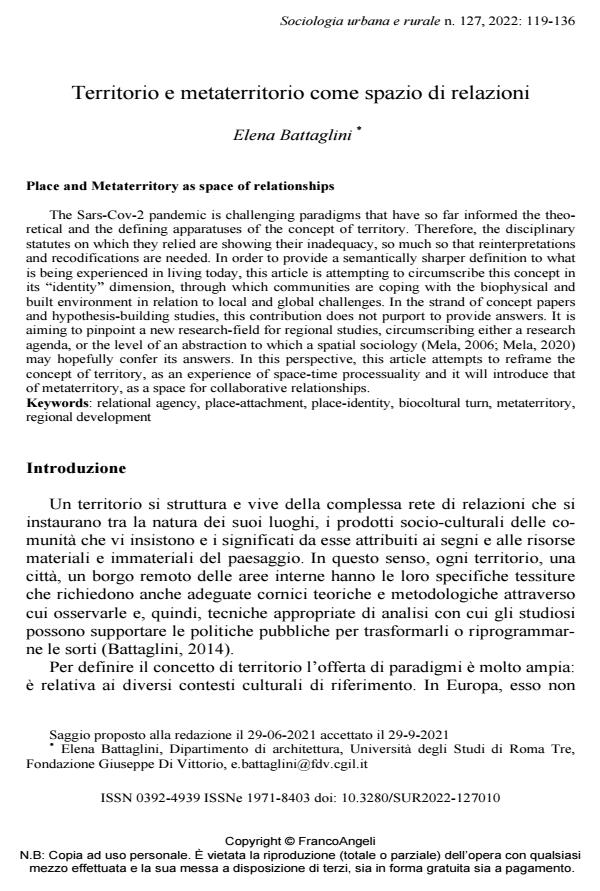Territorio e metaterritorio come spazio di relazioni
Titolo Rivista SOCIOLOGIA URBANA E RURALE
Autori/Curatori Elena Battaglini
Anno di pubblicazione 2022 Fascicolo 2022/127
Lingua Italiano Numero pagine 18 P. 119-136 Dimensione file 298 KB
DOI 10.3280/SUR2022-127010
Il DOI è il codice a barre della proprietà intellettuale: per saperne di più
clicca qui
Qui sotto puoi vedere in anteprima la prima pagina di questo articolo.
Se questo articolo ti interessa, lo puoi acquistare (e scaricare in formato pdf) seguendo le facili indicazioni per acquistare il download credit. Acquista Download Credits per scaricare questo Articolo in formato PDF

FrancoAngeli è membro della Publishers International Linking Association, Inc (PILA)associazione indipendente e non profit per facilitare (attraverso i servizi tecnologici implementati da CrossRef.org) l’accesso degli studiosi ai contenuti digitali nelle pubblicazioni professionali e scientifiche
La pandemia da Sars-Cov-2 ha messo in controluce i paradigmi che hanno informato finora gli apparati teorici e definitori del concetto di territorio; gli statuti disciplinari su cui essi poggiavano stanno quindi mostrando la loro inadeguatezza tanto da rendersi necessarie reinterpretazioni e ricodifiche. Al fine di fornire una definizione semanticamente più attinente a quanto si sta esperendo nell’habitare oggi, l’Articolo tenterà di circoscrivere questo concetto nella sua dimensione "identitaria", attraverso cui si stratificano, nel tempo, gli esiti dell’adattamento delle comunità in relazione all’ambiente biofisico e costruito in rapporto con le sfide locali e globali. Nella tradizione dei concept papers e degli hypothesis-building studies, questo contributo non pretende di fornire risposte ma si prefigge lo scopo di perimetrare un nuovo campo d’indagine per gli studi socioterritoriali, ovvero di circoscrivere un’agenda di ricerca, nonché il livello di astrazione al quale, si spera, una sociologia spazialista (Mela, 2006; Mela, 2020) possa conferire le sue risposte. In questa prospettiva, l’articolo rielaborerà il concetto di territorio come esperienza di processualità spaziotemporale, e introdurrà quello di metaterritorio, come spazio di relazioni collaborative.
Parole chiave:agency relazionale, attaccamento al luogo, identità di luogo, biocoltural turn, metaterritorio, sviluppo regionale
Elena Battaglini, Territorio e metaterritorio come spazio di relazioni in "SOCIOLOGIA URBANA E RURALE" 127/2022, pp 119-136, DOI: 10.3280/SUR2022-127010